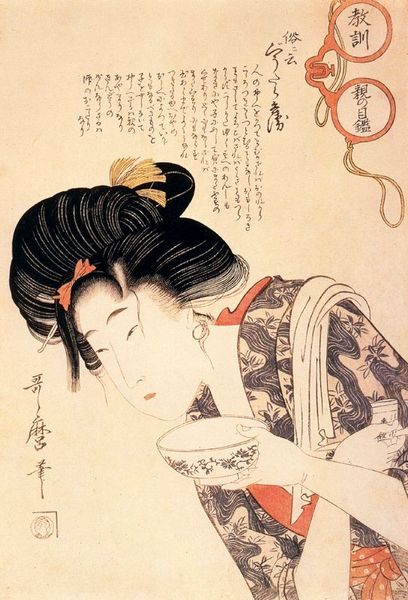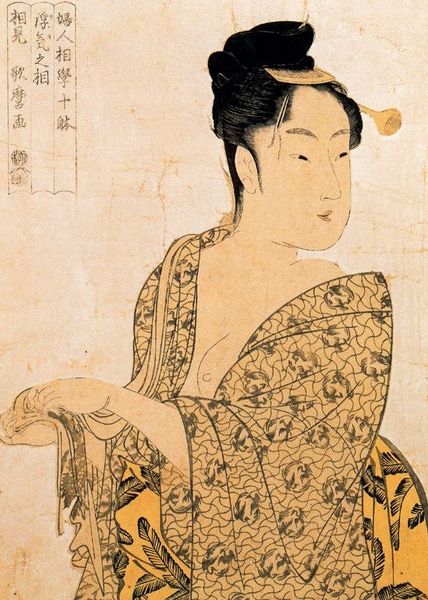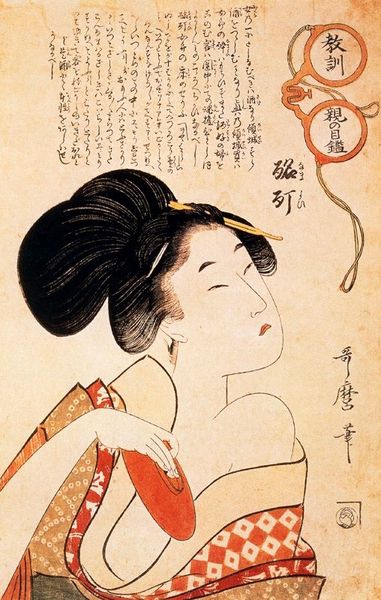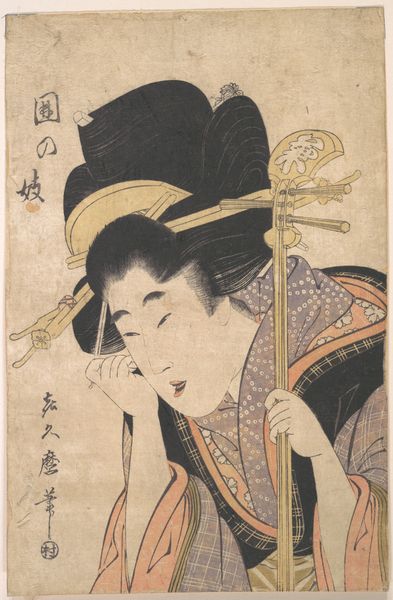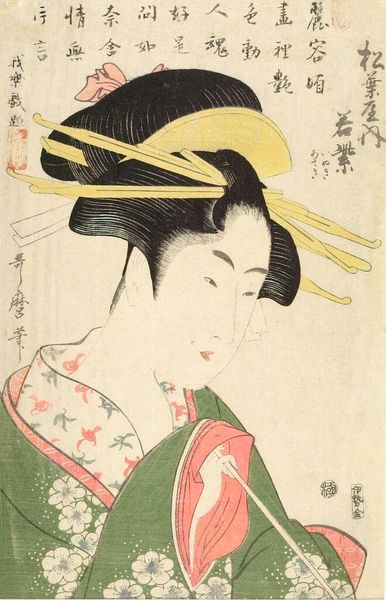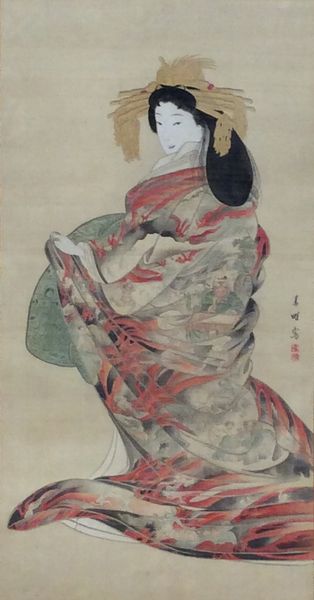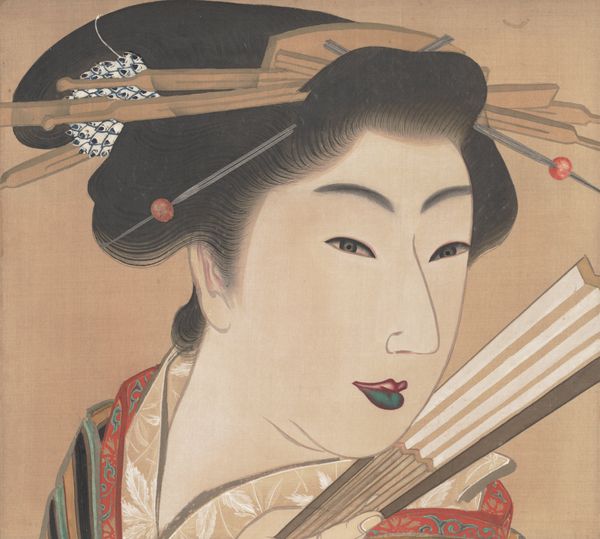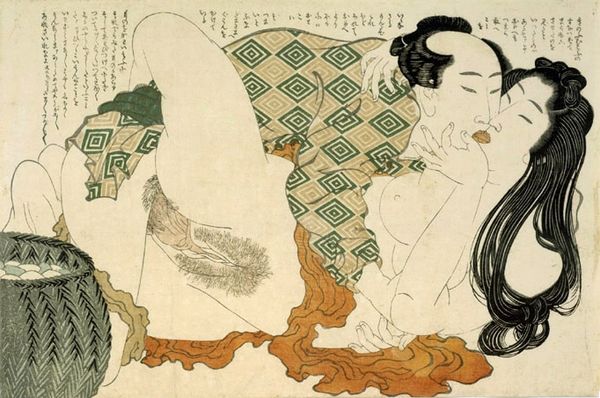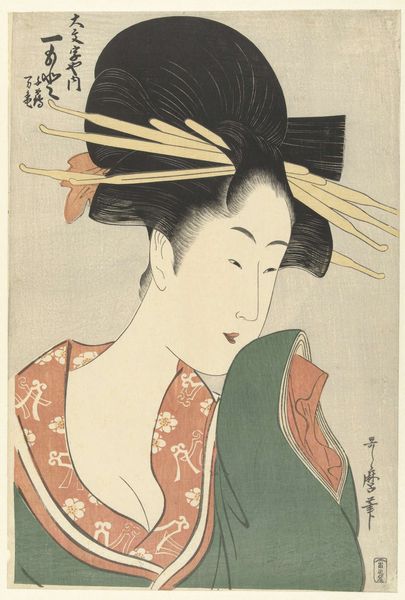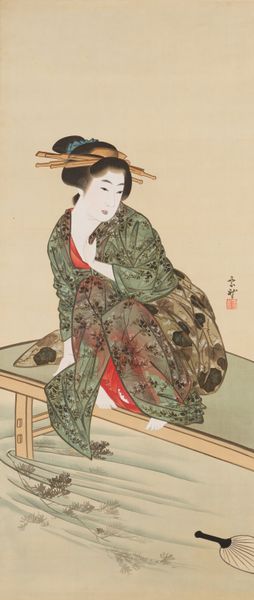
print, woodblock-print
#
portrait
# print
#
impressionism
#
asian-art
#
ukiyo-e
#
woodblock-print
#
erotic-art
Copyright: Public domain
Editor: Here we have Kitagawa Utamaro's "Courtesan," a woodblock print in the Ukiyo-e style. There's an intimacy to the composition, almost as if we're intruding on a private moment. What’s your interpretation of this work? Curator: The figure is clearly presented for the male gaze, reflecting the role of women in that society. Utamaro positions the courtesan in a specific way, inviting the viewer into this carefully constructed world. But is it solely for pleasure? I wonder, how might we analyze this piece through a feminist lens, considering the power dynamics at play here? Editor: I hadn’t thought of it that way. The soft lines and the muted colors initially made me think of gentleness, but you're right, there's an element of performance, a constructed persona. Is that typical for Ukiyo-e? Curator: Ukiyo-e prints, particularly those depicting women, often negotiate complex social realities. They simultaneously celebrate female beauty and reinforce patriarchal structures. Think of it as a commodity; her image, her desirability is the product. Editor: So, it's less about idealizing beauty and more about capturing the realities of gender roles and class within a specific historical moment? Curator: Precisely! It's about understanding the social codes embedded within the image. Utamaro was active during the Edo period. We should then ask ourselves: what were the conventions, what was the intent of producing erotic art, what were the historical conditions shaping the visibility and status of courtesans in Japanese society? Editor: That really shifts my perspective. I initially saw it as a simple, pretty image. Now, I recognize the complexities around the representation of women and societal power structures that underpin it. Curator: Art is never just simple; it's always a product of, and a reflection on, its time. Looking at art through this lens opens up new avenues of inquiry.
Comments
No comments
Be the first to comment and join the conversation on the ultimate creative platform.


